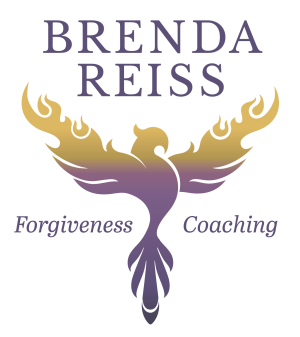Have you been experiencing anger, and you’re not sure why? Or does it seem like someone you love has been angry, and you want to help? Let’s discuss why we have anger and how we can use forgiveness to release those feelings.
Did you know that anger itself isn’t a primary emotion? When something makes us mad, and we get angry, that anger is actually a secondary emotion. Beneath anger lies a painful primary emotion-shame, frustration, sadness, hurt, pride, or fear.
Anger represents the energy we put in motion that comes from suppressing pain–whatever it is. When we don’t allow our anger to flow, that suppression can seem like we’re trying to put a lid on a volcano. You know it’s going to blow one day!
Anger: Energy In Motion
Since anger represents energy in motion, it will stay stuck with us unless we
release it or the volcano erupts. That’s not the healthy way to interact with others in a relationship. Though releasing anger frees the ‘stuck’ energy and allows the held emotions to move freely through our body as feelings, we want to be able to experience anger with purpose and control. This is how we maintain our sanity and keep the feelings of anger in our relationships in check.
Anger work is how we can maintain control of our anger and use it to propel our growth and forgiveness. The Radical Forgiveness process allows us to come to love our anger as a way to love ourselves and others…and get in touch with the emotions to move forward.
The first two stages of the Radical Forgiveness Process ask us to get in touch with our anger and get to the underlying emotion behind it. To do this, you have to experience it and be ready to tell the story behind the feelings.
Stage One in the process means you need to tell the story. You need to write this from the point of view of a victim, which is why we call it the victim story. If you’re angered, you feel you’ve been victimized, and when sharing about your anger, you are likely to retell this victim story repeatedly.
Each time tell how you were victimized you, you grow tired of hearing it after a while. That’s how I was when I was talking about my ex.
I tell my clients that when they tell me their story, they’re telling it that way for the last time because the forgiveness process will help shift their perspective, and they’ll no longer be the victims.
That leads to Stage Two of the process—and that stage is about feeling anger. Anger scares people because they’re worried about hurting others if they lose control.
When it’s resisted or suppressed, it still comes out. I can vouch for this with my ex–I didn’t even realize how angry and suppressed I’d felt until I left. I knew how powerful it was when I ripped apart a pressboard desk because of my unexpressed anger.
The good news, though, is that when you know how to control your anger without suppressing it or denying it–it’s very healing!
That’s what Radical Forgiveness can help with–safely experiencing anger. Not talking about it, not analyzing it or labeling it, but experiencing it in a safe way.
How do you do this?
Radical Forgiveness: Experiencing Anger In A Safe Way Toward Healing
Has anyone ever told you to love your anger? No, of course not! They tell you to control it, hide it, let it go, or even release it.
We don’t often hear this because no one really wants to deal with anger–it can
be frightening and judged as wrong or undesirable. No one wants to feel anger, so we just try to process it and move on. Trying to process it through talking is just resistance. And what you resist persists.
Resistance is a refusal to comply or accept something.
If you don’t accept anger as an emotion, you invoke a flight or fight response. It happens whenever we introduce any change–good or bad- and can lead to psychological discomfort.
When we are psychologically uncomfortable, we fall back on other mechanisms to cope. Studies have found these coping behaviors show up as perfectionism, criticizing others, disrespectful attitudes, being self-critical, preoccupation with appearance, social withdrawal, the need to be seen as independent and invulnerable, or an inability to accept compliments or constructive criticism.

stronger when you resist. You learn to create coping mechanisms that don’t allow healthy relationships or interactions, and emotions that are meant to flow through the body cannot do so. That energy is basically a hostage in our body, and we have to love ourselves (and our anger) enough to feel the anger, work through it and get that energy moving again.
Anger work is not really about anger–in fact, it might more appropriately be called energy release work because it’s simply the process we use to get the stuck energy moving around in our bodies again. To start that process of energy release, we love ourselves enough to work toward Radical Forgiveness.
How Can We Release Anger In Controlled Ways?
To release anger in controlled ways is to work through it–to feel it and love yourself enough to love the emotion and ensure it’s released.
One of the best ways to do this when you’re angry is to do some type of physical activity that may feel explosive, like hitting the bed with a baseball bat or tennis racket. Don’t hurt yourself or anyone else, but do something that gives you an explosive energy release.
That includes allowing yourself to throw a good old-fashioned temper tantrum. Throw yourself on your bed or sofa and just scream. Pound. Thrash. Safely, in your own space, but with energy. This is so good for the 2nd Chakra and SO good for allowing you to speak your frustration and anger out loud. Anger often gets stuck in our throats, and releasing it through that throat chakra is amazing…makes sense why yelling is often so intrinsic to our emotions, doesn’t it? We just don’t want to yell at others and hurt them in the process.
If you’re not into explosive activities, scream into a pillow. Dance like you’re mad. Stomp your feet. Find some sort of movement that will allow you to process that energy and get it out of your body.
Some cities even have ‘rage rooms’; you can go there and beat the heck out of stuff. It’s not yours, and it’s meant to be hit, and it’s a huge, fun relief and release of energy. If you can combine physical activity and the use of your voice, that’s a really successful energy release!
When we do this emotional surrender, we feel alive–maybe more than we have in a long time–and we find that anger energy has dissipated.
Anger: Love But Let Go
It’s important to note that it is all too easy to become addicted to anger. When we become angry, our bodies get flooded with cortisol and epinephrine–better known as adrenaline. If you’ve ever known an ‘adrenaline junkie,’ you know that adrenaline seekers will do whatever feeds that need. Anger feeds on itself and then easily becomes resentment.
Resentment takes pleasure in going over and over an old hurt, so much so that it will constantly revisit the pain on purpose to vent the anger. It becomes a powerful addiction.
While it’s vital to love yourself enough to feel the anger, once the energy of anger has been allowed to flow as feeling, you need to use the energy for positivity.
Sometimes that looks like setting healthy boundaries for future interactions where your anger may reoccur. Sometimes it looks like feeling empathy or compassion for someone who angered you or forgiving them despite their seeming lack of remorse.
Sometimes it looks like forgiving yourself. Whatever that healthy output looks like, it’s how we prevent anger from becoming an addiction.
Consistent Anger Is A Sign
It’s also important to note if we are consistently angry. That may mean that something in our lives is out of alignment, and we need to check in on ourselves.
In my life, this looks like anger accompanying the anticipatory grief I am experiencing with my husband’s dementia diagnosis. It bothered me so much that I was getting angry; my counselor suggested this anger might be bringing a message. A message to reflect on where I might be holding back or feeling stuck.
I looked at myself and my life and realized I was feeling that I had already lost so much. All the things I wouldn’t be able to do with my husband, so much I wanted to do with my business but couldn’t because caretaking takes priority.
That’s when my anger puzzle was solved–taking the time to sit quietly with myself and be honest led me to realize I didn’t want to spend my life only being a caretaker. While that may sound cold and removed, the truth is that I cannot be the wife I want to be when I’m exhausted by being the caregiver I need to be.
I wouldn’t have had this realization if I’d just listened to other people’s opinions and judgments of what they thought I should do, it came because I was willing to get in the muck of forgiveness work.
Doing so allowed me to turn my anger into something positive–asking for help and finding places for assistance. Hiring someone to help.
Getting to the core of my anger allowed me to positively turn it into something
good for my husband and myself. I didn’t have to do this alone; we’re both better for it.
There’s much more to the Radical Forgiveness process that helps you in various
ways, but Stages One and Two are important because they ask us to be deep and real with ourselves and our anger so we can process the feelings.
Feel your anger. Love it. Help it move through your body as a feeling that is not a hostage inside of you. Remember, what you resist (your anger) persists, so you’re not doing yourself any favors by pushing it away.
Write out your story and then work to release your anger. If you feel having someone with you as a witness, because you’re worried about the intensity of the anger, then by all means, find that person. Or, give the rage room a try!
Most importantly, figure out what YOUR anger is telling you. You’re doing the hard work; listen to the answers that come to the surface. Then you’ll be able to embrace the anger and have the release that’s good for you and everyone in your life.






0 Comments